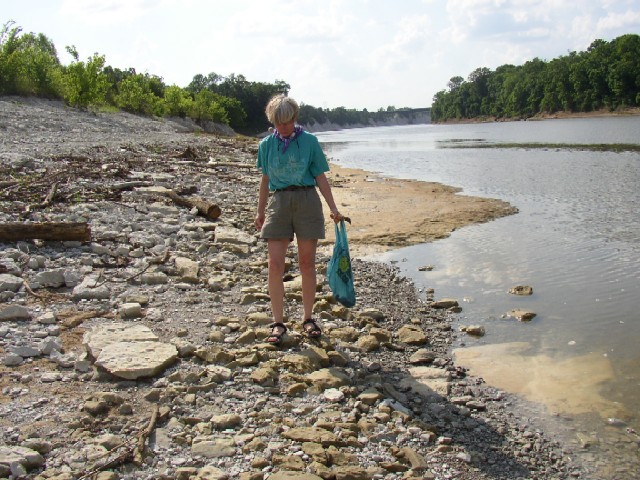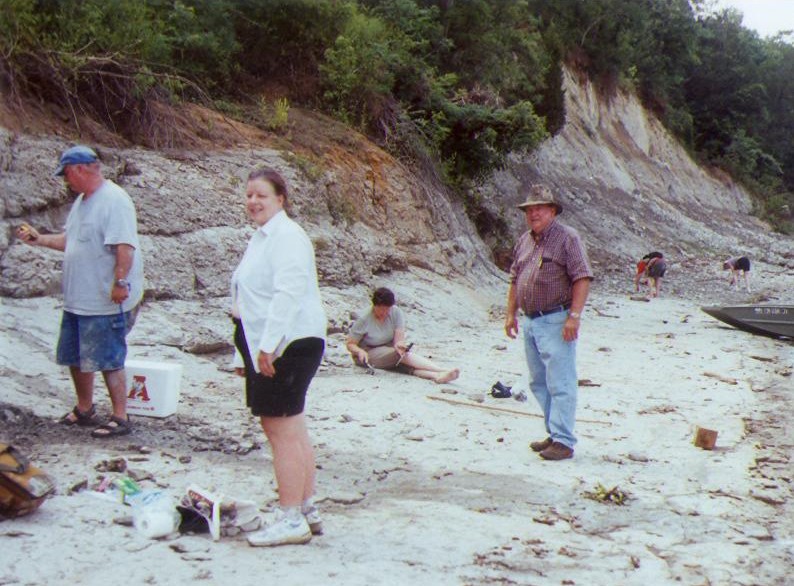Visitor
Campanian
A New Genus and Species of Tyrannosauroid from the Late Cretaceous (Middle Campanian) Demopolis Formation of Alabama
Giant fossil coelacanths of the Late Cretaceous in the eastern United States
May 22, 2004 - Cretaceous Fossils, Sumter Co, AL
As Bobby came over to see what all the fuss was about, he saw "odd shapes" sticking out of the chalk about 15 feet before he got to where Greg was working, and after looking closely, realized it was several more vertebra. Steve came over to assist in excavating this new pile of bones. The other part of the group had gone to another nearby beach, and were basking in the sun (and I suspect they went swimming based on Nancy's drenched appearance!). They decided to ride back over after all the hard work had been done, and see what we had found. Then Jan asked if we had looked under that tree trunk beside us. Well, no. So the trunk was moved, and low and behold, there were about 5 more vertebra under it, which were also excavated. So this was truly a group find, and everyone got to work on the excavations, initial cleaning, and proper packing.
Bill, with the assistance of Leisa, did a great job on the site survey and drawings. Greg, who worked many years with the paleontologists at Red Mountain Museum, supervised the excavation and has been preparing the fossil bones for display. Thanks to all for the fine work and photos! (NOTE: any professional paleontologist who desires to study these fossils, please send your request via email.)
Afterwards, a number of members went to another river site in Sumter county to collect marcasite.
Bill Cunningham also contributed to this report.
(Photos courtesy of Nancy Kenfield, Bill Cunningham, Vicki Lais, and Greg Mestler.)
(Click images for larger view.)



In large photo above, this is the leftmost vertebra, immediately after excavation.  Top view of vertebra.
Top view of vertebra.
Bottom view. 

One of the many gastropods found. 
What did you find?

Vertebral column extends 7 meters from near Coke can to several feet beyond the excavators.
The excavation site had a small drainage problem...
Samples of typical finds - ammonite, straight cephalopod, gastropod, turritella, limpet, oyster.
Steve with his latest treasures.
Bobby washing mud off the vertebra.

Group of eight vertebra.

Three vertebra in situ (about 15cm apart)

A vertebra in matrix (caudal concave discoid about 5cm)

Ammonite impression (about 30cm)
Local wildlife.
Water hyacinths are pretty, but is an invasive species that destroys our rivers and lakes, and it is prohibited to sell it in the state of Alabama. Thick infestations can make boating or swimming impossible.

Several members traveled to another Sumter County location to collect marcasite.

White chalk cliffs in Sumter County, AL.









